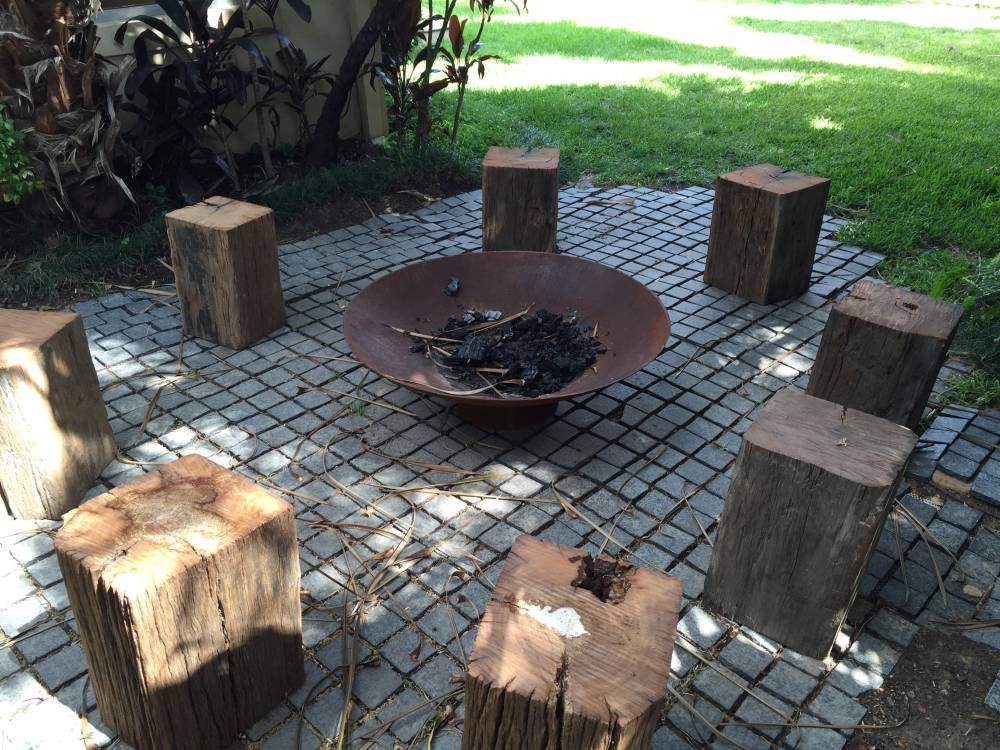
How to Choose A Fire Pit - OLA
Table of Contents
Types of Fire Pits and Choosing the Best Fit

When selecting a fire pit for your backyard, let your outdoor space be your guide. A minimalistic, sleek bowl design complements a modern garden, whereas an intricate brazier could be a perfect addition to a classic home. Consider finishes that harmonize with your existing landscape – stone, weathering steel, cast iron, or concrete.
Size plays a vital role too; a compact space may be better suited to a small bowl-style fire pit. Keep in mind that a fire pit that is too small in a large space may look disproportionate. Generally, a larger fire pit looks better, but be sure to measure your area to ensure ample room for movement around it.
While most fire pits primarily serve as an ambient centerpiece and a source of warmth, some come with added features like grill plates or rotisserie brackets.
Fire Pit Location
A glowing fire pit naturally becomes the center of attention, so embrace its role as the hub of social gatherings by setting it up as the core of a conversation or entertainment zone. Place it at a safe distance from the house but still within easy reach of other activities. For instance, positioning it near the barbecue area allows guests to effortlessly move between the two spaces. Some BBQ fire pits can serve both purposes, being aesthetically pleasing and allowing cooking of large feasts!
Emulate the allure of a campfire by arranging chairs or benches around the fire pit, close enough to feel the warmth and engage in conversation across the flames while maintaining a safe distance from flying sparks.
Fire Pit Safety

Open flames demand caution, so ensure your fire pit is set up on a flat, level surface and on a non-combustible material like concrete pavers or gravel. Position it a safe distance away from the house, other structures, garden features, or plantings that could catch fire. Also, take into account wind strength and direction – you don't want smoke drifting into your home or your neighbor's yard!
Never leave the fire unattended and supervise children and pets closely. Dispose of ashes responsibly, waiting until they are completely cold before removing them. Certain accessories like ember screens and lids can mitigate loose embers and help smother the fire when the night is done.
Using Your Fire Pit
Consider whether your fire pit will be a permanent feature or brought out only occasionally. If you plan to store it when not in use, a lightweight model will be easier to move.
To maximize available space, consider using a flat cover to transform your fire pit into a coffee table when not in use. This also prevents water from collecting in the bowl during rain.

Choosing the Right Fuel
For a safe and efficient fire, burn the appropriate wood. Hardwood produces less smoke and generates more heat than softwood. Keep wood sheltered from the elements to ensure it stays dry and burns well. some fire pits have in built wood storage which can also be aesthetically pleasing in any scenario. The drier the wood, the better; use a moisture meter to check for a moisture content between 15 and 20 per cent.
Always use sustainably forested timber, and avoid burning driftwood, painted or pressure-treated wood, plywood, or particle board, as they can release toxins into the air.
Find Your Perfect Fire Pit
Continue reading our Ultimate Guide to Fire Pits to learn more about everything fire pit related including maintenance, types of fuel, fire pit ideas, fire pit types, and more!
Ready to shop? Explore our extensive range of fire pits available at OLA - For Outdoor Living Essentials in Australia. Discover the ideal fire pit to transform your backyard into a warm and inviting gathering space.



Leave a comment